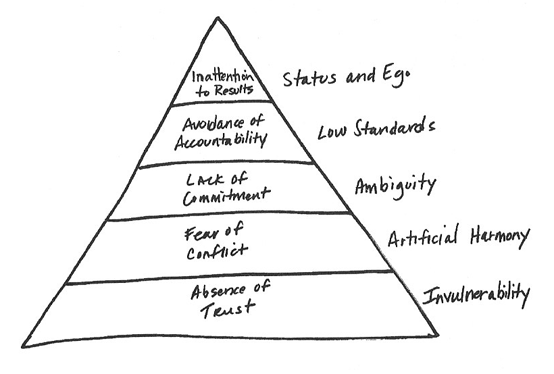Here are some of the lessons I’ve learned over the years, and continue to learn every day.
 1. Work Hard
1. Work Hard
There really is no substitute for hard work. The law of sowing and reaping and Newton’s third law hold true in nature, and are equally applicable to everyday life. Don’t expect to ever get more than you put in. Don’t expect to ever be paid more than you deserve. And if it happens, don’t expect it to last long. Compete only with yourself; strive every day to be better than you were the day before.
2. If You Don’t Ask, the Answer is Always “No”
One of the main reasons some women succeed at landing the tough assignments and earning salaries comparable to those of their male counterparts is because they’ve learned to speak up. Life is not fair and neither is the work place. Take an active role in making sure you convert your diligence into rewards — this will not happen automatically. Ask how you’re performing, ask for more responsibility, let others know when you’re being treated unfairly and toot your own horn.
3. Don’t Scratch with the Chickens
Choosing the wrong people to keep company with at work can really drag you down. Gossips are great at identifying who did what wrong, but don’t put any energy into making things right. Similarly, complainers cast blame, but take no personal responsibility. Both consistently expect the worse and both tend to consistently get the worse. When you’ve suffered a set-back, take it in your stride and move on. It is a mistake to whine or bitterly complaining to whoever will listen. Hone your skills and keep your eyes peeled for the next available opportunity. Prepare to soar with the eagles instead.
4. Flaunt Your Skills, Not Your Sexuality
Make the office a strictly “no-flirting” zone. Being inconsistent on this point may land you in compromising situations that may be difficult for you to recover from. On the other hand, celebrate the fact that you’re a woman. There is no need to forgo lipstick or try to “be one of the boys” to be taken seriously. Maintain a balance; people will find it easier to listen to what you’re saying if they aren’t being blinded by your fluorescent blue eyeshadow.
5. Lighten Up
Take the time to get to know those around you. Don’t be afraid to share a laugh or have fun at work. Embrace the concept of LBWA – leading by walking around. When people like and connect with you as an individual, they will be much more likely to support you when you really need it.
6. You Can’t Fix Everything
Being a perfectionist is an incredible waste of time and energy. Get your priorities straight, and make a habit of always working on your most important tasks first. Make a list every day. If you start your day tackling the easy stuff and then reacting to every email that pops into your in-box, you will find yourself both inefficient and over-stressed. Always put first things first, and learn to delegate or drop the things that aren’t worth your immediate time and energy.
7. Trust Your Passion
The more you enjoy what you do, the greater the likelihood of being successful and enjoying that success. Figure out what you enjoy and find ways to do more of the things you love in your job. It won’t necessarily happen overnight, but create a plan and work with it.
8. Make Time For You
Make time to enjoy your life, and be happy and healthy. Cultivate interests outside of work – stimulate all your senses, eat well and move your body. Most of all, spend quality time with your friends and family.
9. It’s Okay to Cry
Frustrations will come, and so will the tears. When you break down emotionally on the job, it leaves people wondering if you can handle the task you’ve been entrusted with. Crying in front of bosses and coworkers will make you to lose credibility fast. Be tough on the job and save the tears for the drive home.
10. Never Stop Learning
My boss shared this gem with me just recently in a rare one-on-one moment. I embrace learning by reading voraciously on subjects that interest me. What he was talking about was learning the art of extracting ideas and solutions from everyone around. Asking others “what would you do?” is not a sign of weakness, it is a sign of real strength. It could make the difference between success and failure, particularly in really challenging times.



